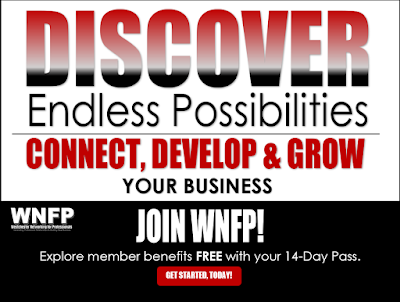Regardless of the dietary plan you choose to follow, you should choose to adhere to the following tips to improve your mood, memory and drive.
With more than 100,000 papers published on nutrition in the peer-reviewed medical literature each year, it’s hard to keep up. And for every positive effect, there was a reported negative one, or a case study showing an adverse response to the plan. One minute, scientists say carbs are bad; the next they proclaim that carbs are good.
Any meal plan must be personalized to ensure we each have the energy we need to not just feel good but feel great, and have the energy to pursue our goals and navigate this minefield called life. This personalization will increase the likelihood of successfully following the plan and eating in a way that benefits us.
Sign up for Westchester Networking for Professionals Small Business Exchange (6 weeks) Program to Accelerate Your Business with Others. Learn more here.
But regardless of the dietary protocol you choose, to improve mood, memory and drive, the following are a few key factors that must be included and then tweaked to match your individual response to various foods:
Remove sugar and processed food from your diet.
This will help rid the body and brain of toxins and inflammation.
Eat foods that increase your microbiome’s diversity.
Eliminate foods that cause you discomfort.
includes any food you’re sensitive to that causes constipation, diarrhea, sluggishness, brain fog, headaches, fatigue or mood changes. For greater insight, have a food sensitivity test done.
Repopulate your gut with healthy bacteria.
You can do this by consuming the right kind of probiotics.
Fuel up with fats.
This can help curb your cravings and reduce the midafternoon energy slump.
Eat anti-inflammatory foods.
This includes green leafy vegetables, beets, blueberries, bok choy, broccoli, celery, chia seeds, coconut oil, flaxseed, ginger, pineapple, salmon, turmeric, and walnuts. Exclude any foods that cause you sensitivity.
Eat diverse organic fruits and vegetables.
This will increase microbiome diversity and promote overall gut health.
Drink filtered water.
Much is still unknown about the impact chemicals like chlorine can have on our delicate gut microbiome. Filtration is crucial regardless of where you live to prevent unnecessary exposure to toxins from rusty pipes or compromised water supplies.
Switch trans fats and vegetable oils for olive, avocado or grapeseed oil.
One study found the participants who took in the most trans fats increased their risk of depression by 48 percent. Trans fats are often hidden in highly processed foods at the supermarket and used to deep fry food at various fast-food chains.
Consume more omega-3 and less omega-6.
Both are essential fatty acids important for good health, but we need them in the right balance to help protect our joints, pancreas, heart, skin and mood stability. Too much omega-6, which we consume in corn and vegetable oils, can cause the body to retain water and raise blood pressure, which could lead to blood clots, thus raising the risk of heart attacks and strokes.
Consume foods with antifungal properties.
This includes cayenne pepper, coconut oil, garlic, ginger, lemons, limes, olive oil, onions, pumpkin seeds and rutabaga to help fight off bad gut bacteria. Don’t consume any foods that you’re sensitive or allergic to. Find substitutes that work for you.
Keep activated charcoal on hand.
Activated charcoal can assist by binding itself to toxins, which are then excreted by the body. Activated charcoal has been used for years in emergency rooms for certain kinds of poisoning, including alcohol. It helps prevent the poison from being absorbed from the stomach into the body. It can also assist with gas, bloating and even lowering cholesterol.
Practice intermittent fasting (IF).
It’s widely reported that IF is effective for weight loss, inflammation reduction and boosting brain power by increasing ketones. It’s a pattern of eating, not a diet. It doesn’t change what you eat so much as when you eat. Instead of consuming food all day long, you eat within a set window of time. The most popular protocol is to eat for eight hours per day and fast for 16. According to Mark Mattson, a professor of neurology at Johns Hopkins University, fasting has been shown to increase rates of neurogenesis (the growth and development of new brain cells and nerve tissues) in the brain. Higher rates of neurogenesis are linked to increased brain performance, memory, mood and focus. It has also been shown to boost production of BDNF (brain-derived neurotrophic factor). BDNF is considered “Miracle-Gro for your brain” and plays a role in neuroplasticity, which makes your brain more resilient to stress and adaptable to change.
By following these easy-to-apply guidelines, you’ll begin to notice a significant change in your energy levels, as well as your mental clarity.
Source: https://www.entrepreneur.com/
Image credit: Rawpixel | Getty Images
ABOUT WNFP
Westchester Networking for Professionals (WNFP) is a business organization focused on providing our members and guests with an extraordinary networking experience, bringing business professionals together for the sole purpose of generating new relationships and developing new business opportunities. Not a member, learn how you can become a member and join this awesome group of professionals to connect and grow your business.
Stay Connected with WNFP!















